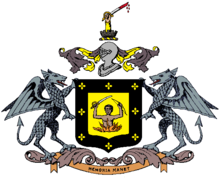|
Chhota Udaipur
Chhota Udaipur is a district in the Indian state of Gujarat. Established on August 15, 2013, by dividing Vadodara district, it consists of six talukas: Chhota Udepur, Pavijetpur, Kawant, Naswadi, Sankheda, and Bodeli. The district headquarters is located in Chhota Udepur. It is a town and a municipality in Chhota Udaipur district. History Chhota Udaipur was originally ruled by Bhil king , The last Bhil king of Chhota Udaipur was Kaliya Bhil in 1484.[1] Chhota Udaipur was the capital of the erstwhile Princely State of Chhota Udaipur, founded in 1743 by Rawal Udeysinhji, a descendant of Patai Rawal of Champaner. This state was a First class state under Rewa Kantha Agency and merged with the Union of India on 10 March 1948. Rulers (title Maharaja Maharawal)
DemographicsAs of 2001[update] India census,[2] Chhota Udaipur had a population of 27,165. Males constitute 51% of the population and females 49%. Chhota Udaipur has an average literacy rate of 69%, higher than the national average of 59.5%; with male literacy of 76% and female literacy of 62%. 11% of the population is under 6 years of age. CultureThe Kali Niketan (Nahar Mahal) palace, built as the summer residence of the erstwhile royal family is a notable monument in Chhota Udaipur. Chhota Udaipur is also known for the Rathwas in and around the city. The Rathwas are known for Pithora painting, usually carried out on the walls of the village houses. The tribal museum of Chhota Udaipur has a large collection of tribal artefacts. Many tribal artefacts are also brought for sale in the hats (weekly markets) in the city and nearby villages. Industries in largest dolomite lums and powder. References
|
||||||||||||||||||||||||||||||

